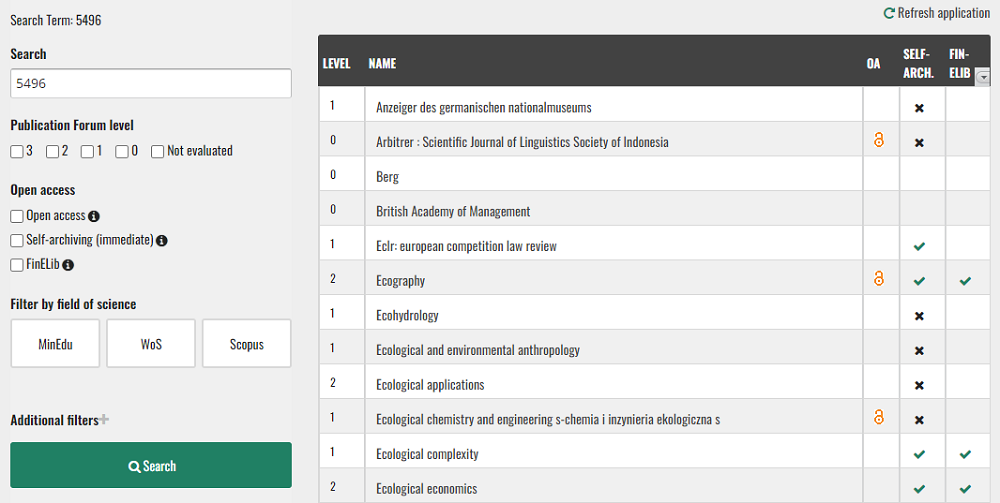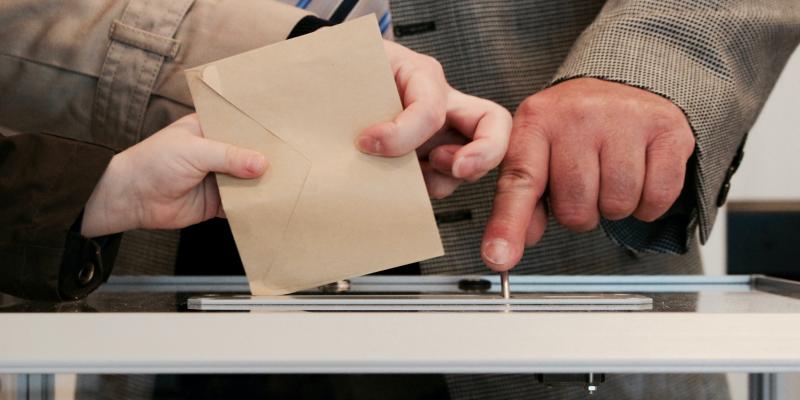
The JUFO portal now provides more diverse information about open access to channels, their Plan S eligibility and FinELib agreements. At the same time, the front page has been made clearer.
The publication channel database has undergone significant reforms to the open access knowledge base and front page search options. The result of the work can now be seen on the JUFO portal, which explains more reliably and unambiguously the openness of the publication channel, the self-archiving policy and the possible FinELib benefit associated with the channel.
The purpose of the open access knowledge base is to help researchers in identifying publication channels that enable the immediate open access of scientific journal and conference articles in accordance with the national policy of the Finnish scientific community. The knowledge base also supports the monitoring mentioned in the policy regarding the openness and average quality level of publication channels.
One of the starting points of the development work was the JUFO portal user survey conducted in the autumn of 2020, whose responses specifically highlighted development needs related to open access and usability. The open access data sources were surveyed in a separate project (in Finnish), after which a new semi-automatic system was developed for updating the data and, in addition, the necessary changes were made to the user interface of the JUFO portal.

In the new front page on the JUFO portal, it is possible to filter publication channels in accordance with open availability, immediate self-archiving permission offered by the publisher and the FinELib open access benefit. The front page has been simplified by hiding lesser-used filters, such as publication language and country, behind the “Additional filters” menu. The number of columns displayed by default has also been reduced from the listing view. Hidden columns may choose to appear from the arrow menu in the upper right corner of the list.
The open access knowledge base consists of:
- Open Access: Information sources include the Directory of Open Access Journals DOAJ, the Bielefeld University Gold OA list, manual review, and publishers' journal lists. From the fact that there is no OA mark for the channel, one cannot conclude that the journal is not Open Access.
- Self-archiving: The source of information is Sherpa Romeo. The X mark means that, according to Sherpa Romeo, the journal does not allow immediate self-archiving. From the fact that there is no mark for the channel, one cannot conclude that the journal would not allow immediate self-archiving.
- FinELib: The source of information is FineLib. This information has been verified from publisher-specific journal lists on FineLib's “Publish OA” page. Some of the listings are not yet in machine-readable format. The fact that there is no FinELib mark of the channel, it cannot be concluded that the journal does not involve a FinELIB benefit. It should also be noted that the Finelib benefit covers journals, that are not classified in the Publication Forum, so they do not appear on the JUFO portal, either.
- License information: Information sources include Sherpa Romeo, DOAJ, manual review, and publisher journal listings.
In the new listing view, the open access icon in the OA column tells that the publication channel is immediately and completely open. This is a significant change from the earlier one, when the icon appeared similar regardless of the type of open availability. At the moment, the information on delayed open access or hybrid publication channels cannot be found on the portal. The new columns also include self-archiving information and a FinELib benefit that may be associated with the publication channel. For more detailed self-archiving conditions, for example, versions and licenses, can be found in the detailed view by clicking on the name. The conditions of research funders can be checked using the Journal Checker Tool integrated into the page.
In the future, users logged in to the portal will also see the changes proposed by the panels to the level categories of the publication channels in the “new level” column. The panels will carry out a re-evalution of levels 2 and 3 this year and the panels' preliminary proposals for changes are currently available for review and comment by the scientific community.
Development work will continue in the autumn. At that time, information about the author fee is to be displayed in the detailed view, so that it will also be possible to limit the search for free Diamond OA publishing channels.
At this stage of the development work, any feedback is very welcome. It can be given directly to the service address of the Publication Forum julkaisufoorumi@tsv.fi.
Photo: Mateusz Dach, Pexels.


